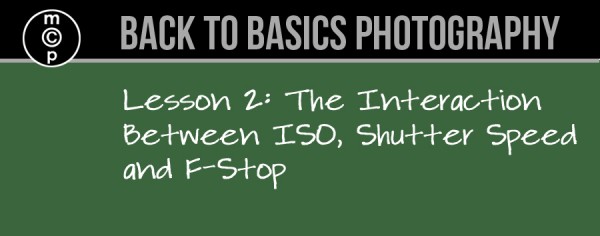Featured Products
Back to Basics Photography: Interaction Between ISO, Shutter Speed and F-Stop
In the upcoming months John J. Pacetti, CPP, AFP, will be writing a series of basic photography lessons. To find them all just search “Back to Basics” on our blog. This is the second article in this series. John is a frequent visitor to the MCP Facebook Community Group. Make sure to join – it’s free and has so much great information.
In our last article I gave you a general idea of how the exposure triangle works together. This time we’ll go into some detail on that interaction.
First a little more detail on each of the three components of exposure;
ISO is the sensitivity of the sensor. The sensor gathers light. Light on the sensor is what creates your image. The lower the ISO number the more light is needed to create an image, bright scenes. The higher the ISO number the less light is needed to create an image, darker scenes.
Shutter speed is the duration the shutter is open allowing light to hit the sensor. The slower the shutter speed (1/15, 1/30) the longer light hits the sensor. The faster the shutter speed(1/125, 1/250) the shorter light hits the sensor.
F-Stop is the aperture opening. The opening that light passes through on the way to the sensor. F-Stop controls the amount of light that reaches the sensor AND the depth of field (DOF). DOF is the area of general focus of an image. The lower the F-number (1.4, 2.8) the wider the aperture, the shallower the DOF. The higher the F-number (8, 11) the narrower the aperture, the greater the DOF.
Now that you know what each of these items does while creating an image, let’s look at way to determine your exposure settings.
How to determine your exposure settings: One way of doing this.
My preference is to decide on my ISO first. Since ISO is the sensitivity of the sensor to light, in bright light scenes, like outdoors in sun light, on a beach or park I would choose a low ISO, 100. If it’s an overcast day possibly 200. There is almost no reason to be at a higher ISO in day light scenes. There could be exception. As a general rule 100 or 200 should do just fine outdoors in most situations. In low light settings, evening, approaching dusk, I may choose 400, possibly 800, depending on the amount of light available. Indoors I would choose 400 with flash possibly 800 if I wanted to see more of the room light, possibly 1600, even higher if I’m working with available light, like in a church that does not allow flash photography.
Once I have chosen my ISO, I decide on the Depth of Field (DOF) I want. Do I want a shallow DOF, (F-2.8, 4.0) or deep DOF (F-11 or higher). Once I make that decision all I need to do is set my Shutter Speed based on those two settings, my F-Stop and ISO. Once I have set my Shutter Speed, I’ll do a few test images to be sure my exposure is correct, if not, I’ll make small adjustments to obtain a good exposure.
I hope this give you a more in depth look at our exposure triangle. Go out and practice. Get a good handle on how the exposure triangle works. Do that and you’ll be on your way to creating great images that won’t require fixing, just some creative editing. As our articles continue, we’ll go into detail on the exposure triangle.
John J. Pacetti, CPP, AFP – South Street Studios www.southstreetstudios.com
2013 Instructor at MARS School- Photography 101, The Basics of Photography www.marschool.com
If you have question, feel free to contact me at [email protected]. This email goes to my phone so am able to answer quickly. I’ll be glad to help in any way I can.
No Comments
Leave a Comment
You must be logged in to post a comment.








































I think some may just need to be careful with the way their cameras are setup as far as step values are concerned. I can setup ISO to adjust in 1/3, 1/2 or 1 stop increments. The same goes for Shutter Speed.